Equal To
When we say that two quantities are "equal to" each other, it means that they have the same value. In mathematics, we use the symbol "=" to show that two expressions or values are equal.
For example, in the equation 3 + 4 = 7, the expression on the left side of the equation is equal to the value on the right side, because 3 + 4 is indeed equal to 7.
Similarly, in the equation x = 5, it means that the variable x has the value of 5. This shows that x and 5 are equal to each other.
It's important to note that the "equal to" symbol is different from the "not equal to" symbol, which is represented by "≠". This symbol is used to show that two quantities are not equal to each other.
[Equal To] Related Worksheets and Study Guides:
.◂Math Worksheets and Study Guides Third Grade. Solids and Faces
Study Guide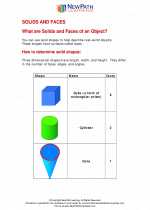 Solids and Faces
Solids and Faces  Worksheet/Answer key
Worksheet/Answer key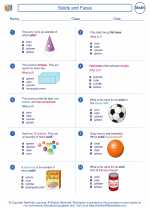 Solids and Faces
Solids and Faces  Worksheet/Answer key
Worksheet/Answer key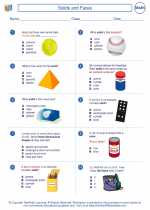 Solids and Faces
Solids and Faces  Worksheet/Answer key
Worksheet/Answer key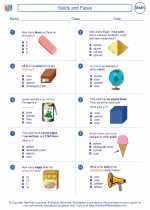 Solids and Faces
Solids and Faces  Worksheet/Answer key
Worksheet/Answer key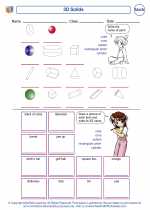 3D Solids
3D Solids  Worksheet/Answer key
Worksheet/Answer key 3D Space
3D Space 

 Worksheet/Answer key
Worksheet/Answer key
 Worksheet/Answer key
Worksheet/Answer key
 Worksheet/Answer key
Worksheet/Answer key
 Worksheet/Answer key
Worksheet/Answer key
 Worksheet/Answer key
Worksheet/Answer key

The resources above cover the following skills:
Geometry (NCTM)
Analyze characteristics and properties of two- and three-dimensional geometric shapes and develop mathematical arguments about geometric relationships.
Identify, compare, and analyze attributes of two- and three-dimensional shapes and develop vocabulary to describe the attributes.
Classify two- and three-dimensional shapes according to their properties and develop definitions of classes of shapes such as triangles and pyramids.
Use visualization, spatial reasoning, and geometric modeling to solve problems.
Recognize geometric ideas and relationships and apply them to other disciplines and to problems that arise in the classroom or in everyday life.